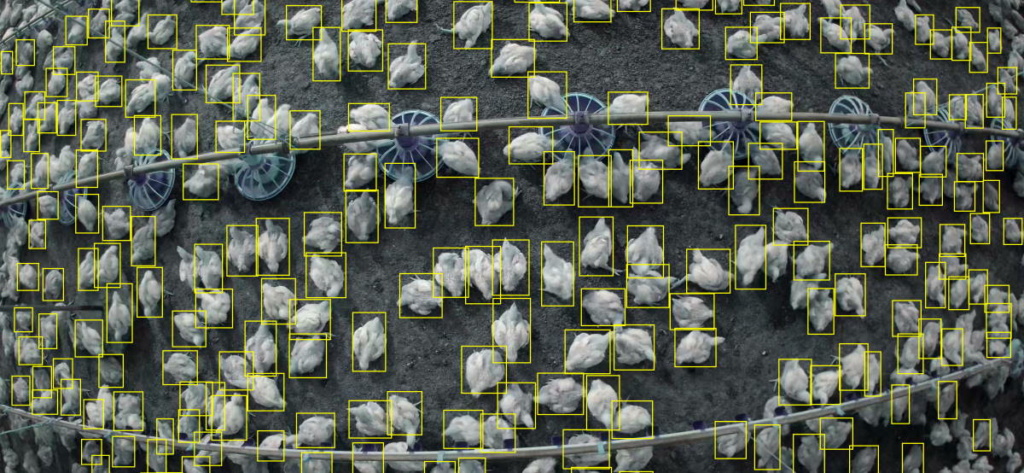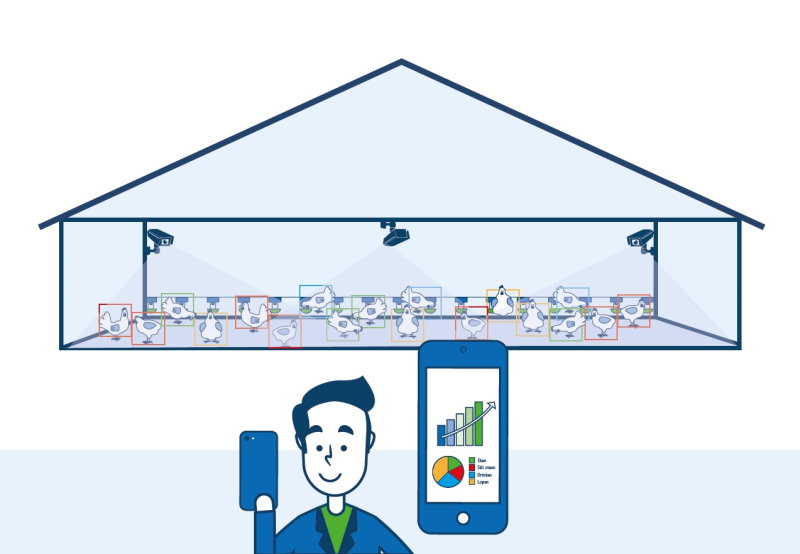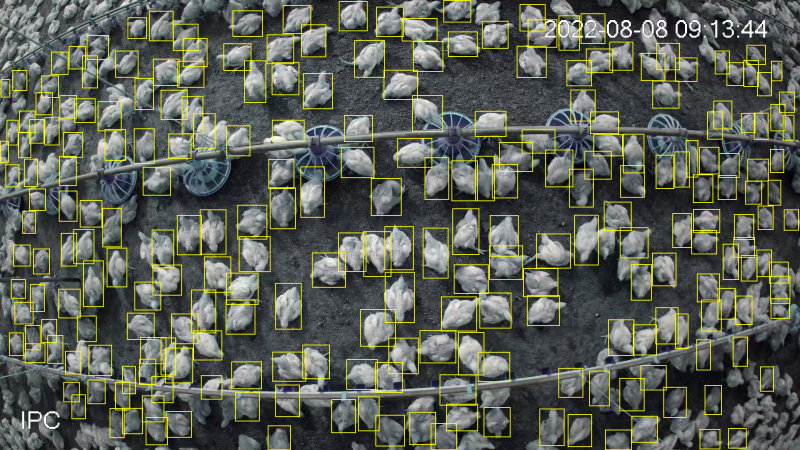
Advancing animal health through AI
With the Ethometer, the animal health specialists at Royal GD are working on an AI-powered platform to analyze poultry behavior patterns in real-time using video data. Employing multiple deep-learning algorithms, the system processes large amounts of video on the fly to identify and classify various aspects of a flock’s behavior, including eating and drinking habits and movement within the group. Ultimately, it generates a comprehensive inventory of behaviors, called an ethogram, which can be used to track and monitor changes in animal behavior over time.
To enable this functionality, the Ethometer relies on a multi-stage process. It starts with an object detection algorithm analyzing a frame within the video feed to identify where the chickens are located within the frame. The frame is divided into a grid, each section of which is then checked for objects. The model can detect multiple objects in a single pass, making it fast and efficient for real-time processing. The feed is also processed to account for varying conditions between stables, such as different lighting conditions and ground types. This step is crucial in enhancing the model’s robustness and generalization capabilities, allowing it to perform well in diverse environments.
The detected chickens are then monitored over time, using a more complex neural network to recognize patterns in the video data. The model captures both the visual content of individual frames and the changes between them. It achieves this by using specialized layers that extend through the frames, essentially examining multiple frames at once.

Edge computing
As neural networks become larger and more complex, they typically need more powerful and specialized hardware to achieve high performance. This can be a challenge for large-scale vision-based AI applications, which often require real-time processing and inference of large amounts of data. For example, training and running state-of-the-art computer vision models like Resnet and Efficientnet with a temporal component can consume significant computational resources.
To overcome such technical challenges, Alten has proposed a combination of efficient AI models and edge computing. We’ve devised a method that synergizes the strengths of both larger, more accurate models and smaller, faster networks to attain high performance while minimizing computational demands. Initially, a smaller and faster neural network is applied to analyze the video feed, pinpointing the locations of the chickens. Subsequently, a larger and more powerful neural network with a temporal component focuses exclusively on the identified locations, streamlining the data processing and enhancing overall efficiency.
In addition to these techniques, we’ve proposed edge computing as a powerful paradigm for deploying efficient AI models in large-scale vision-based applications. By moving computation closer to the data source, edge computing can reduce the amount of data that needs to be transmitted to the cloud for processing. This can improve the latency, reliability and privacy of AI systems, while also reducing the computational requirements and costs associated with real-time, cloud-based AI.
Flock health
This year’s roadmap is focused on addressing several key technical challenges to improve the system’s overall capabilities. One such challenge involves analyzing smaller behavioral differences between similar-looking actions, such as picking the ground versus picking a food tray. This will likely necessitate a larger model with more parameters, which increases computational demands.
Going into next year, we aim to have the Ethometer monitor flock health as well. This involves correlating the ethogram with potential health issues. Such functionality would enable farmers and veterinarians to address health concerns more effectively, ultimately improving animal welfare.
As technology progresses in the coming years, another challenge will be the introduction of individual chicken tracking. This allows the monitoring of each bird’s behavior over time. Currently, tracking thousands of chickens in real-time remains a complex task, but advancements in this area could provide valuable insights into individual behavior patterns.

Sustainable future
By joining forces, Royal GD and Alten have developed a technology that tackles the current challenges in large-scale animal monitoring and behavioral analyses. As the Ethometer evolves and gets more refined capabilities, it will give farmers, veterinarians and the wider poultry industry essential insights and tools to manage flock health, welfare and overall productivity more effectively. Merging AI, edge computing and advanced analytics, the platform is a significant step forward in improving animal health and well-being within the industry, thereby fostering a more sustainable, uniform and efficient future for the sector.





